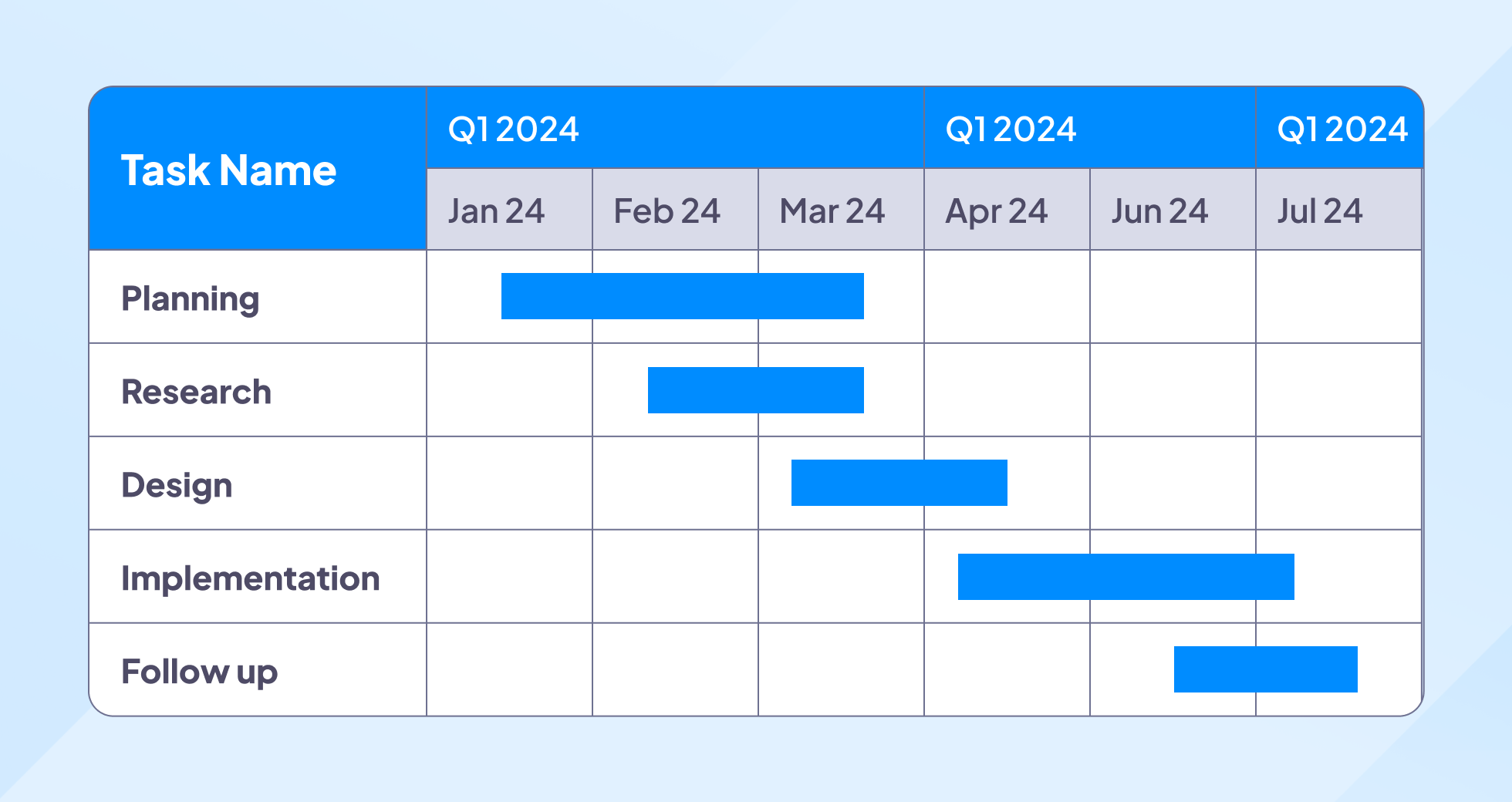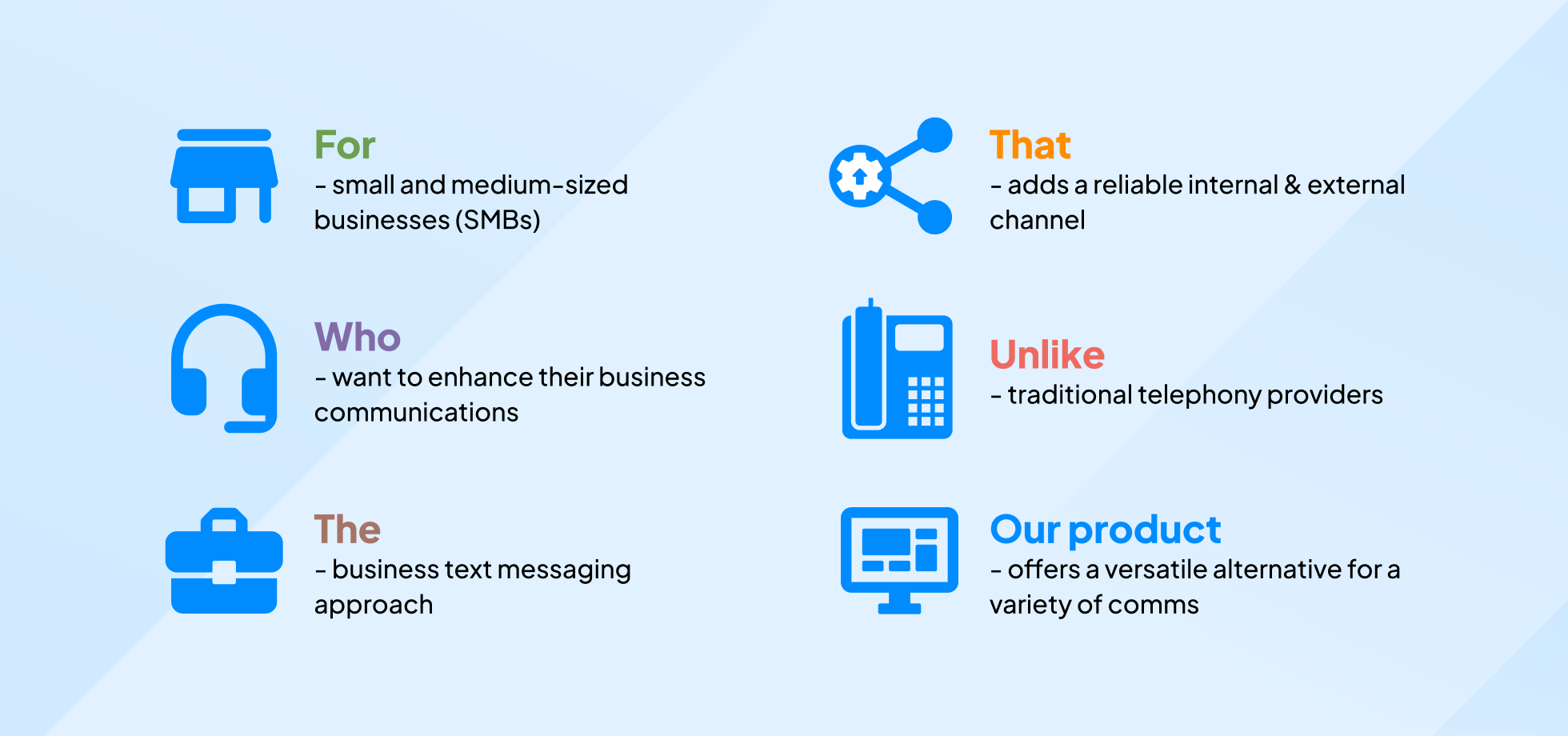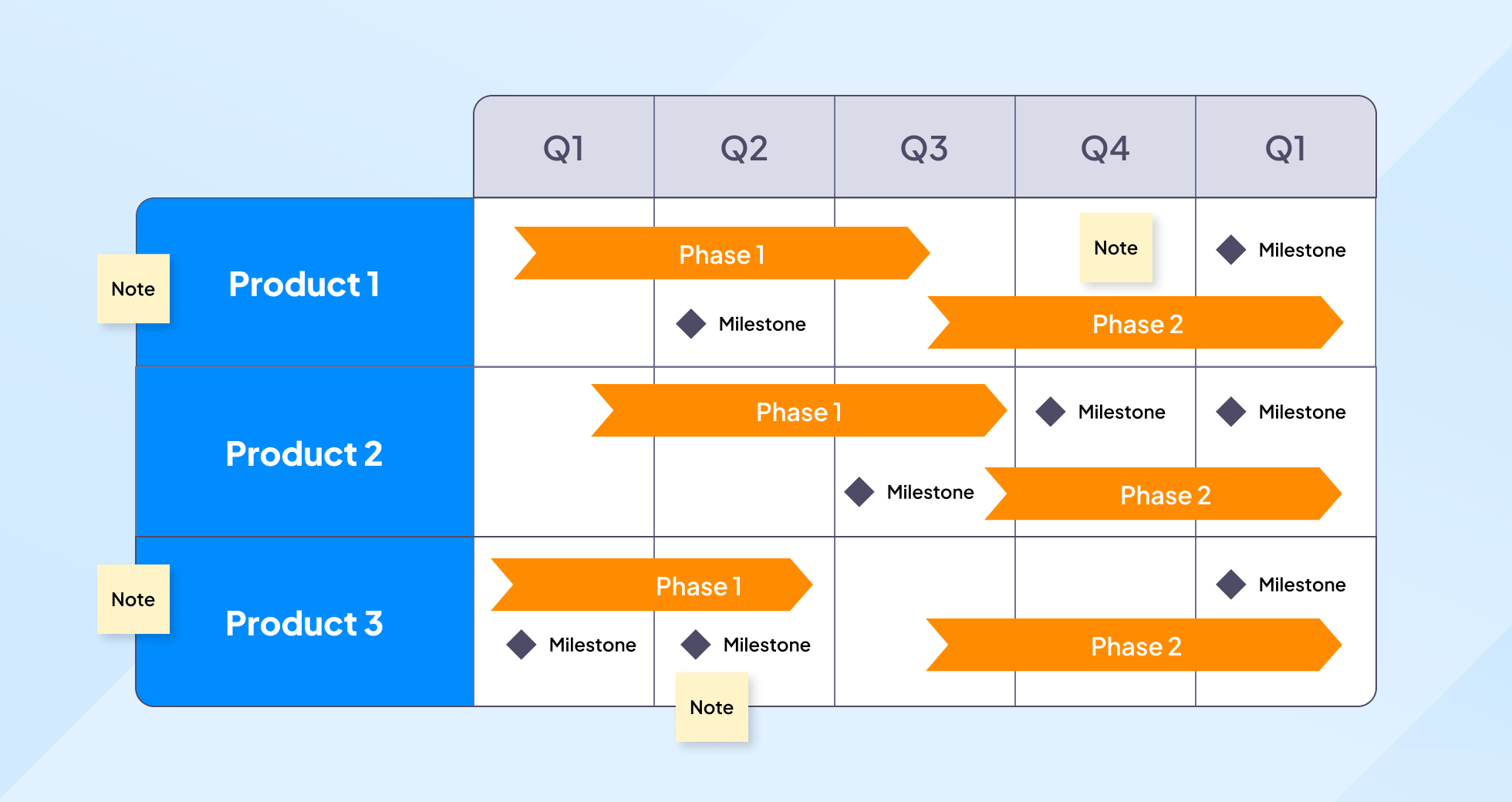
It’s no secret that effective project management is the key to success. According to the latest Pulse of the Profession report published by the Project Management Institute (PMI), companies with an efficient project management process complete 90% of their undertakings on time, within budget, and to the desired standards.
But what is the best way to approach it? And how can you deal with any difficulties that might arise along the way? If you’ve ever wondered how to manage a project successfully from start to finish, then this article is for you.
In the following lines, we will go over the general framework for project management and offer some tips that will help you keep a structured yet adaptable approach. Let’s get into it.
The 5 project management process groups
The Project Management Body of Knowledge, or the PMBOK® Guide for short, is at the core of the project management process. The PMI designed this framework to standardize project management practices.
To manage projects efficiently, the PMBOK outlines five process groups:
- Initiation
- Planning
- Execution
- Monitoring & control
- Closure
Although they can be seen as steps to manage a project, these process groups are not strictly sequential—they often overlap and interact throughout. In the following sections, we’ve explored each group and its traditional components in greater detail.
A. Project initiation
This process group involves defining and authorizing the project or a project phase. Key activities include identifying stakeholders, defining the initial scope, and developing the project charter, which formally authorizes the project.
Defining the project
Your first priority in the initiation stage will be to define the project. Your business goals within this context should be measurable and achievable.
Identify the project’s scope by clearly outlining the following key elements:
- Objectives
- Deliverables
- Limitations
Both objectives and deliverables need to be well-defined and have agreed-upon specifications. In terms of limitations, lay out what will and will not be included in the project to avoid confusion down the line.
Stakeholder analysis
Next, consider the project’s stakeholders. Put together a list of individuals, groups, or organizations with a vested interest in the project, both internal and external to the business. What level of involvement will each of them have in the project?
During the project’s lifestyle, you will need to engage stakeholders strategically based on their level of interest, so make sure you answer this question in this stage. In this way, you can tailor your communication methods to suit various interests and influence levels.
Feasibility study
Is your project financially viable? A feasibility study will answer this question for you and the entire organization.
To conduct it, first determine if the current technology and resources are sufficient to complete the project successfully. Then, review any legal implications and ensure operational capabilities are in place to support project requirements. With both these aspects in order, your project is almost ready to be greenlit.
Project charter
The project charter is the culmination of all your planning and research thus far. This succinct yet essential elevator pitch should contain a concentrated and compelling overview of all the elements outlined in your plan:
- Project purpose and scope
- Allocation of key resources
- Milestones and overall timeline
- Total cost and proposed budget
- List of all stakeholders and their signatures
B. Project planning
This group is crucial for setting the project’s foundation. It includes processes to define objectives and scope, create a project management plan, and determine subsidiary plans.
Developing the plan
In the planning phase, it’s important to first develop a project roadmap by segmenting the project into smaller, more manageable tasks. Now, you can start allocating resources, establishing timelines, and estimating costs more accurately.
To be able to make informed decisions on where your project will fit in on the market, we recommend including various types of data in the roadmap, such as:
- User feedback
- Market trends
- Usage statistics
- Competitive analysis
Determine what resources—people, equipment, and materials—are needed for each task within the roadmap. Assign them based on their availability and the project priorities. This will ensure accountability and efficient task management among employees.
Using tools like Gantt charts or project management software, outline the timeline for each task. Include start and end dates and align them with resource availability. This will help you manage costs more efficiently and develop a budget that suits your company’s needs.
Risk management
Every project comes with its own risks. After developing a plan, you should know what they are and how to address them.
Together with the project team and relevant stakeholders, assess the likelihood and impact of each risk. This will help you prioritize them and create a response strategy. This could include avoiding, mitigating, transferring, or accepting the risk.
C. Project execution
This process group completes the work defined in the project management plan to satisfy project specifications and objectives. It includes coordinating people and resources, managing stakeholder engagement, and integrating and performing project activities.
Implementing the plan
Implementing a project plan is the first step in the execution stage. At this point, you should use project management tools to assign tasks, track progress, and update statuses. This will ensure everyone is aligned with the project’s schedule and milestones.
You must also continuously monitor resource allocation and availability. Staying on top of evolving team and project needs is essential for the process’s success.
Communication strategy
Learning how to manage a project also means mastering a communication plan that includes key messages and audiences, both internal and external. This includes:
- Team updates
- Stakeholder meetings
- Customer newsletters
A few channels can be used for these, including email, text messages, and video conferencing. You should disseminate your comms between these according to the audience and the type of information being shared.

Team and quality management
Managing your team’s needs appropriately during the execution stage is vital to the project’s success. Provide clear leadership and direction, remaining available for guidance as needed. You should also implement fair conflict resolution strategies, as this fosters a positive working environment that will keep the project on track.
At the same time, you have to stay on top of the quality of the project deliverables. Reiterate the standards that deliverables must meet, established during the planning phase. You should also conduct regular testing and reviews to ensure that these standards are met.
D. Project monitoring and control
This group encompasses tracking, reviewing, and regulating the project’s progress and performance. It also includes identifying areas in which changes to the plan are required and initiating the corresponding changes.
Progress and performance tracking
Keeping track of the project’s progress and the performance of its dedicated team is an essential aspect of the execution step. There are several ways to approach this.
Gantt charts are one popular choice, as they can help you and your team visually track timelines and progress against the baseline schedule.

Project management tools are another great option, as they offer real-time dashboards and monitoring features for various project aspects, including performance, resource utilization, task completion, and cost management.
Using both is an effective way to gather as many insights as possible. This information will be useful when identifying bottlenecks and during stakeholder meetings when analyzing the project’s health.
Change and risk management
On-the-go changes are part and parcel of any project. Implementing a formal process to handle them will spare you a lot of time and some headaches along the way. This documentation should include sections on how to:
- Request changes
- Review changes
- Approve changes
- Implement changes
When changes occur, you must ensure they’re well documented and communicated to all relevant parties. Then, adjust the project plan and documentation to reflect them.
To maintain the project’s health, you should also conduct periodic risk audits to identify and reassess new risks. This should be an integral part of both team and stakeholder meetings. As new risks are identified, update your risk management plans and strategies accordingly.
E. Project closure
This final process group involves finalizing all activities across all project management process groups to formally close the project or a project phase. This includes closing out contract agreements and documenting lessons learned.
Closing procedures
After confirming that all project deliverables have been completed according to standards, it’s time to ensure all documentation and records are signed off.
You can now hold a closure meeting with the team and stakeholders to formally announce the project’s completion. During the meeting, you can also transfer responsibility to the operational teams handling the next phase.
You should also audit all resources that were allocated to the project, including human, physical, and technological ones. This will allow you to properly reallocate them to other organizational projects or roles.
Post-implementation review
Finally, you should assess the project against its initial objectives and success criteria to determine what went well and what didn’t. Create a detailed report that outlines these successes and challenges, providing a clear overview for stakeholders.
You can also meet with the project team and stakeholders to discuss the report. Ask for their feedback as well and document these insights in a structured manner, categorizing them into the five project management process groups. This will be useful for the management of future projects.
10 useful tips for project management success
The project management process can be highly rewarding and problem-free if you keep a few essential things in mind. The 10 tips below will help you enhance your ability to lead projects efficiently, maximizing your chances of success.
- Define clear objectives: Having clear objectives for your project will ensure that all team members understand what needs to be accomplished and why it’s important. You can use the SMART criteria, which stands for specific, measurable, achievable, relevant, and time-bound.
- Create a vision statement: Develop a concise vision statement that describes the project and its goals. This will help motivate and guide the team towards a common goal and serve as a value proposition later on.
For example, the vision statement for a business communication solution like Textmagic would look something like this:

- Create a project roadmap: Outline the major milestones and deliverables of the project. A visual roadmap helps keep the team aligned and aware of the project’s progression and key deadlines. Below, we’ve provided a representation of what that might look like:

- Communicate with your team: Create open lines of communication with your team, providing regular updates and check-ins. Maintaining transparency ensures that everyone is informed, engaged, and has the opportunity to provide input.
- Delegate tasks accordingly: Assign tasks based on employees’ strengths and project management skills. Proper delegation enhances efficiency and empowers your team while also ensuring that the most qualified individuals complete the necessary tasks.
- Identify potential risks: Proactively identify risks that could impact the project’s success. Assess the likelihood and impact of these risks, developing strategies to mitigate them along the way to ensure smooth sailing overall.
- Use project management software: Implement project management software to streamline task assignments, scheduling, resource allocation, and communication. Monday.com, Jira, Asana, and Wrike are some of the most popular tools in this category.

Image source: Jira.com - Monitor project performance: Regularly review project performance against the set objectives and timelines. Use performance metrics to identify areas that need attention and adjust strategies as necessary.
- Celebrate milestones: Recognize and celebrate the completion of key milestones. Celebrations can boost morale, acknowledge team efforts, and motivate members toward the project’s next phase.
- Encourage feedback: Actively seek and encourage input from team members and stakeholders throughout the project. This closed feedback loop fosters a collaborative environment and can provide valuable insights for improving processes.
Conclusion
Adopting a structured approach to project management is fundamental to achieving success. By adapting the strategies outlined in this article to your project’s unique challenges and needs, you can enhance flexibility, responsiveness, and efficiency in the long run.
Embrace following the five project management process groups as a guiding framework while allowing room for adjustments based on real-time insights and feedback. This adaptive approach ensures that your strategy is not only systematic but dynamic as well.
Frequently Asked Questions (FAQs)
Project management according to PMBOK® includes five process groups:
- Initiation – define scope, objectives, stakeholders, and develop the project charter.
- Planning – create detailed plans (roadmaps, budgets, timelines, risk assessments).
- Execution – implement the plan, manage resources, and maintain stakeholder engagement.
- Monitoring & Control – track progress, performance, and adapt as needed.
- Closure – finalize deliverables, document lessons learned, and formally close the project.
Identifying and engaging stakeholders early ensures you understand their interests, influence, and expectations. A clear view of stakeholder roles and needs allows for more strategic communication and smoother project alignment.
During the Planning stage, break down your project into smaller tasks and sub-tasks. Use tools like Gantt charts and roadmaps to visualize dependencies, assign resources, set timelines, and estimate costs. This helps maintain accountability and control.
Identify potential risks by assessing likelihood and impact. Classify risks based on impact, then apply the best-fit strategy: avoid it, reduce its effect, outsource the risk, or accept it with a plan. Continuously monitor and adjust risk plans as the project evolves.
During Execution, coordinate tasks, allocate resources, and track progress.Keep everyone in the loop with regular check-ins, status emails, and quick video calls when needed.
In the Closure phase:
- Confirm all deliverables are completed to agreed standards.
- Hold a closure meeting to transfer responsibilities and sign off.
- Run a project retrospective to capture key takeaways and optimize future workflows.
Related articles
Introduction to SMS marketing for business: Advantages, best practices, use cases and more
Small businesses are always looking for ways to impr...
Texting your way to success: Conversational commerce SMS
In 2021, the global conversational commerce market w...
62 Customer service Email templates for every situation
Clients expect fast and reliable service that meets ...
Transactional SMS explained: Why should your business use it?
In the crowded world of email communications, where ...
Crafting a winning sales pitch: 22 Proven examples to inspire you
Discover our selection of sales pitch examples that ...




